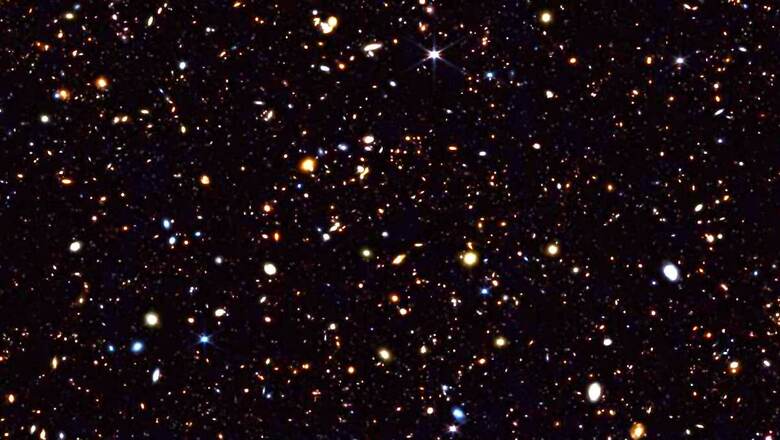
views
In a ground-breaking discovery, the James Webb Space Telescope (JWST) of NASA has captured an awe-inspiring image featuring over 45,000 galaxies in a single frame. This remarkable achievement comes as part of the Advanced Deep Extragalactic Survey (JADES) program, a scientific initiative aimed at delving into the secrets of faint and distant galaxies. The picture was taken of a specific section of the sky known as GOODS-South, offering an extraordinary glimpse into the vast expanse of our universe. The JADES program has allocated 32 days of telescope time to unravel and characterize these elusive distant galaxies, allowing astronomers to unravel the enigma surrounding the formation of the first stars and galaxies.
Intriguingly, even with the data still pouring in, the JWST has already unveiled a multitude of galaxies that existed when the universe was a mere 600 million years old.
According to NASA, the universe was once shrouded in an opaque fog following the cataclysmic event of the Big Bang. Astonishingly, this fog persisted for hundreds of millions of years, and the James Webb telescope was specifically designed to explore this enigma. By peering deep into the galaxies from the Epoch of Reionization, a time when stars and galaxies began to populate the universe, scientists have discovered these ancient galaxies exhibited “unusually strong signatures indicating intense bursts of star formation.” It is believed that the searing hot stars emitted ultraviolet light, resulting in the gas’ transformation from opaque to transparent through ionization.
You're looking at 45,000+ galaxies.This image was taken as part of the JWST Advanced Deep Extragalactic Survey (JADES) — a massive science program that’s revolutionizing what we know about galaxies in the early universe: https://t.co/5gqntO0C4S
Here are the highlights ⬇️ pic.twitter.com/8VqYlmvtDK
— NASA Webb Telescope (@NASAWebb) June 5, 2023
The JADES program also encompasses the study of galaxies dating back to when the universe was less than 400 million years old. These investigations offer astronomers crucial insights into how star formation in the early years differed from the processes observed today. The light from these galaxies is stretched to longer wavelengths, causing a redder appearance due to a phenomenon called redshift Accurately measuring this redshift provides valuable information about the distance and age of the galaxies, shedding light on the mysteries of our cosmic origins.
Before the advent of the James Webb telescope, only a handful of galaxies with a redshift above 8 were observed, corresponding to a universe younger than 650 million years. However, thanks to the JADES program, nearly a thousand of these exceptionally distant galaxies have been uncovered. This discovery will undoubtedly reshape our understanding of the early universe, propelling us toward new frontiers of knowledge and unlocking the secrets of our cosmic past.

















Comments
0 comment